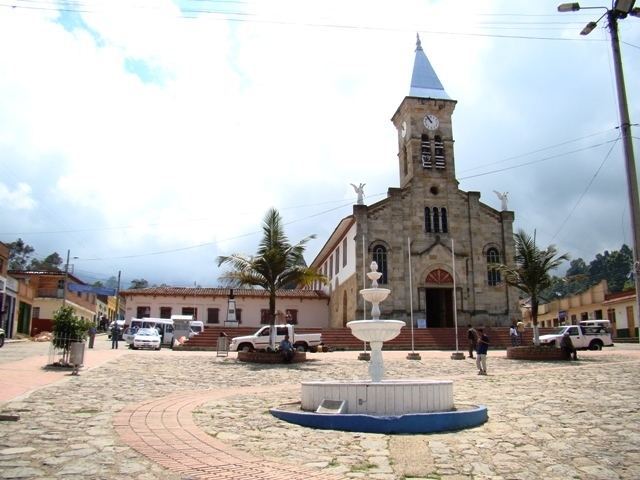Founded 15 July 1537 Elevation 2,180 m (7,150 ft) Local time Thursday 9:10 PM | Founded by Juan de Céspedes Area 264.2 km² Population 12,175 (2015) Founder Juan de Céspedes Ruiz | |
 | ||
Time zone Colombian Standard Time (UTC-5) Weather 13°C, Wind NW at 5 km/h, 87% Humidity | ||
Pasca is a town and municipality in the Cundinamarca department of Colombia located in the Andes. It belongs to the Sumapaz Province. Pasca is situated on the Altiplano Cundiboyacense at a distance of 71 kilometres (44 mi) from the capital Bogotá. It borders Fusagasugá, Sibaté and Soacha in the north, Bogotá D.C. in the north and east, Arbeláez in the south and Fusagasugá in the west. The urban center is located at an altitude of 2,180 metres (7,150 ft) and the altitude ranges from 2,000 metres (6,600 ft) to 3,500 metres (11,500 ft).
Contents
Map of Pasca, Cundinamarca, Colombia
Etymology
Pasca in the Chibcha language means "father's enclosure", according to Acosta Ortegón.
History
Pasca in the time before the Spanish conquest was inhabited by the Muisca, organized in their Muisca Confederation. The southern Muisca territories were ruled from Bacatá, the current capital. On April 6th 1536 conquistadors Gonzalo Jiménez de Quesada and his brother started the strenuous march into the inner highlands of Colombia. With 209 men he arrived on March 12th, 1537 in Guachetá. From there he led his army to conquer the villages of the Muisca on the Bogotá savanna.
One of his captains, Juan de Céspedes, reached Pasca in July 1537, founding modern Pasca on July 15th. It was the last village of the Muisca to be conquered before heading south into the domain of the Sutagao.
Economy
Main economical activities in Pasca are livestock farming and agriculture, predominantly papa criolla, other potatoes, peas, onions, bunching onions, tree tomatoes, beans, carrots, cabbage, lettuce, tomatoes, maize, blackberries, coriander and the Colombian fruit curuba.
Archeology
The famous Muisca raft, representing the ritual of El Dorado, was found in Pasca in 1969. The raft is now part of the Gold Museum collection in Bogotá.
The town contains an archaeological museum and a natural history museum.
